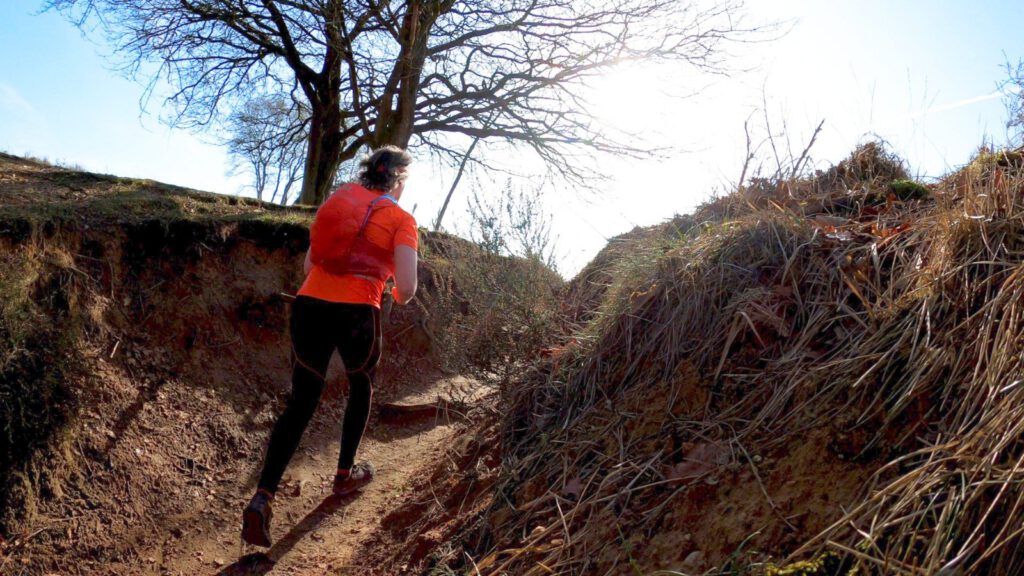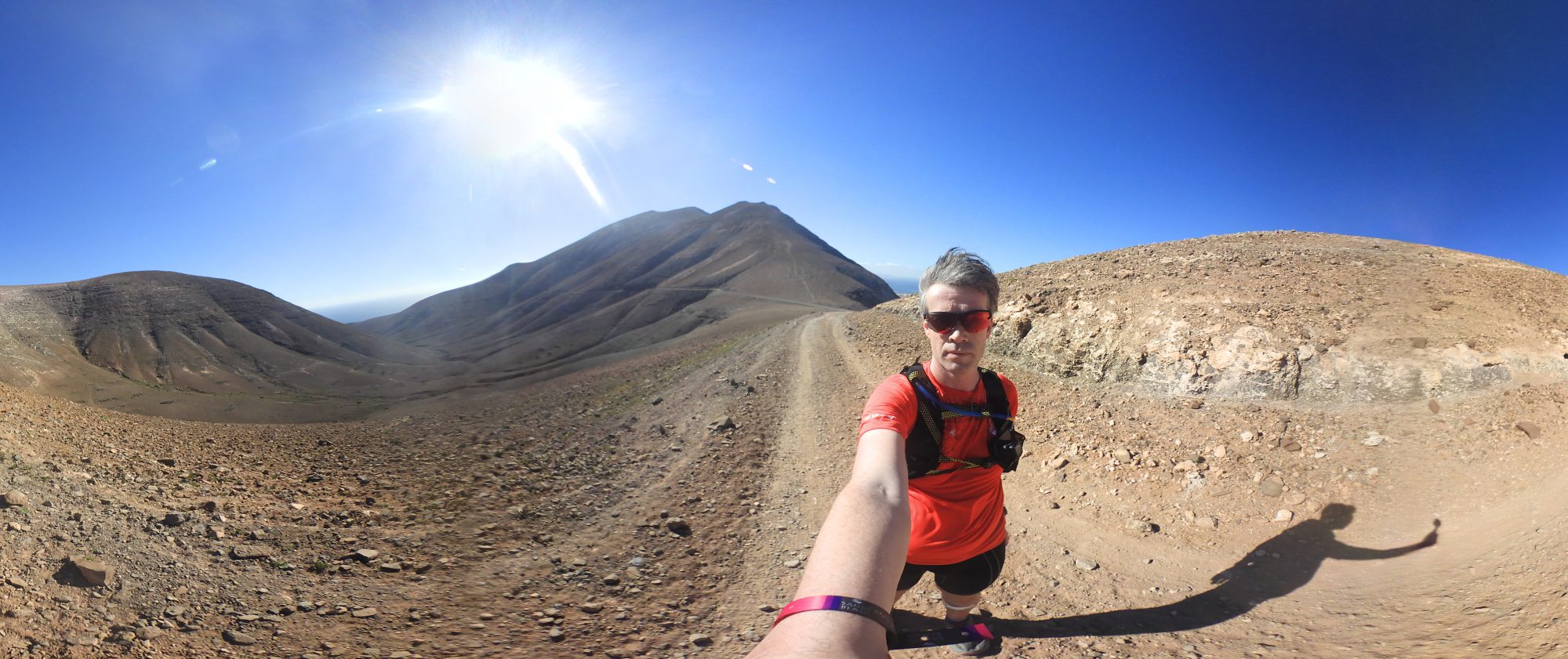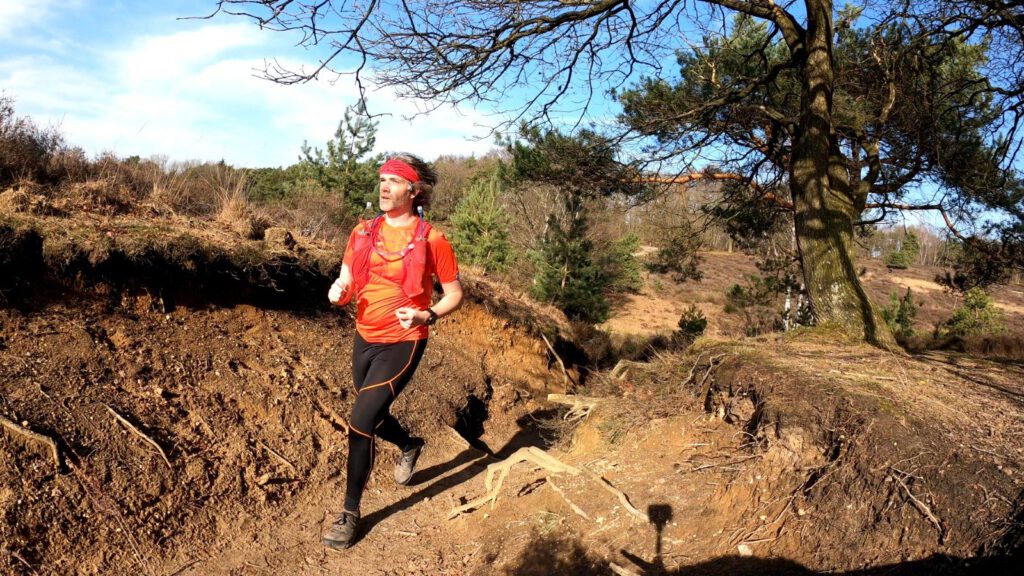
One week it is -10 °C, the next +15 °C, nature switches fast. A sunny outing on the Mookerheide, where a number of Waypoints were waiting for me.
As your hair grows, there is always that moment when it really is unworkable. Part of it falls in your eyes, causing irritation. If it's windy, the hairs rub your eyeballs. If it's raining, the water is running right into them. Is it sunny as the temperature has turned a 180 degrees (well, 25 °C difference in a week), then it's not water but stinging sweat. And yes, my corona hair was exactly at this unwanted length during the run. That's why a headband was unavoidable as long as the hairdressers stayed closed (and now that they are open I haven't been able to get an appointment yet).
Again, this was a very surprising environment. I used to think that the Mookerheide would be near Amsterdam, but that was quite a misconception. In reality I had to travel a bit in the direction of Nijmegen and finally to the station of Molenhoek from where I was directly in the nature reserve. It is where the Maas-Niederrhein path runs, a regional path that has Molenhoek as its northernmost point and Wassenberg in Germany as its southernmost point.
To find the waypoints of the Viking Waypoint Challenge a route of about 20 km was sufficient, but I decided to extend it to 30 km. Not much, but I usually have trouble with the change of weather. Fortunately, according to Komoot, there were enough interesting points in the area for a small extension.
Steep start
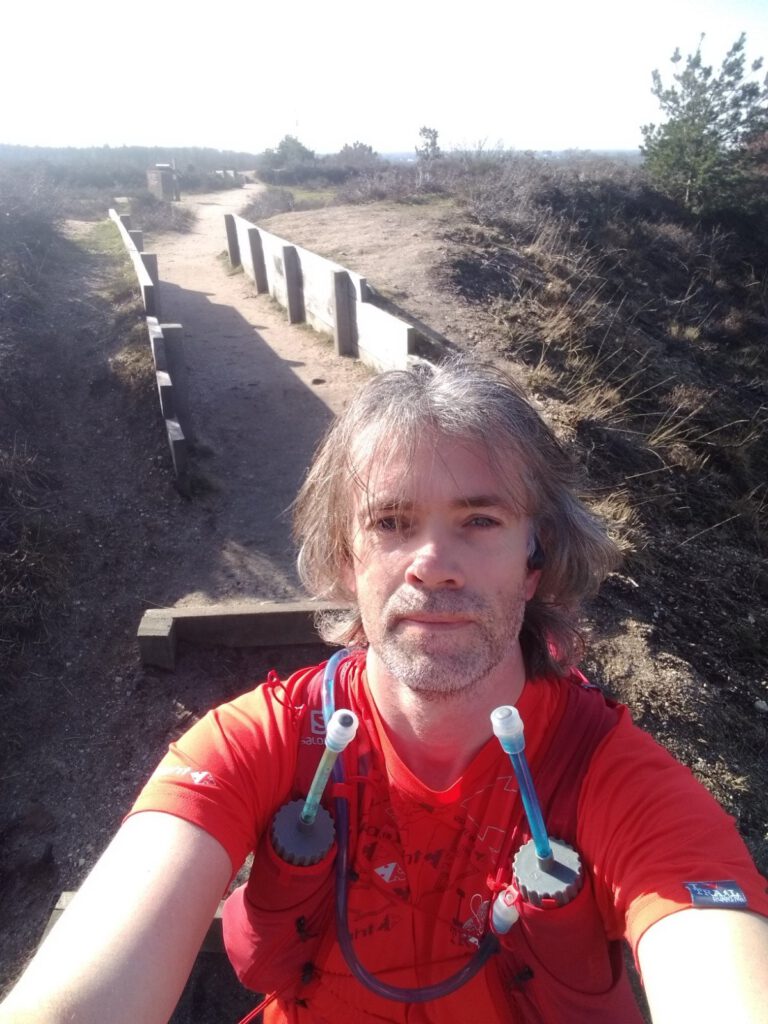
VW24 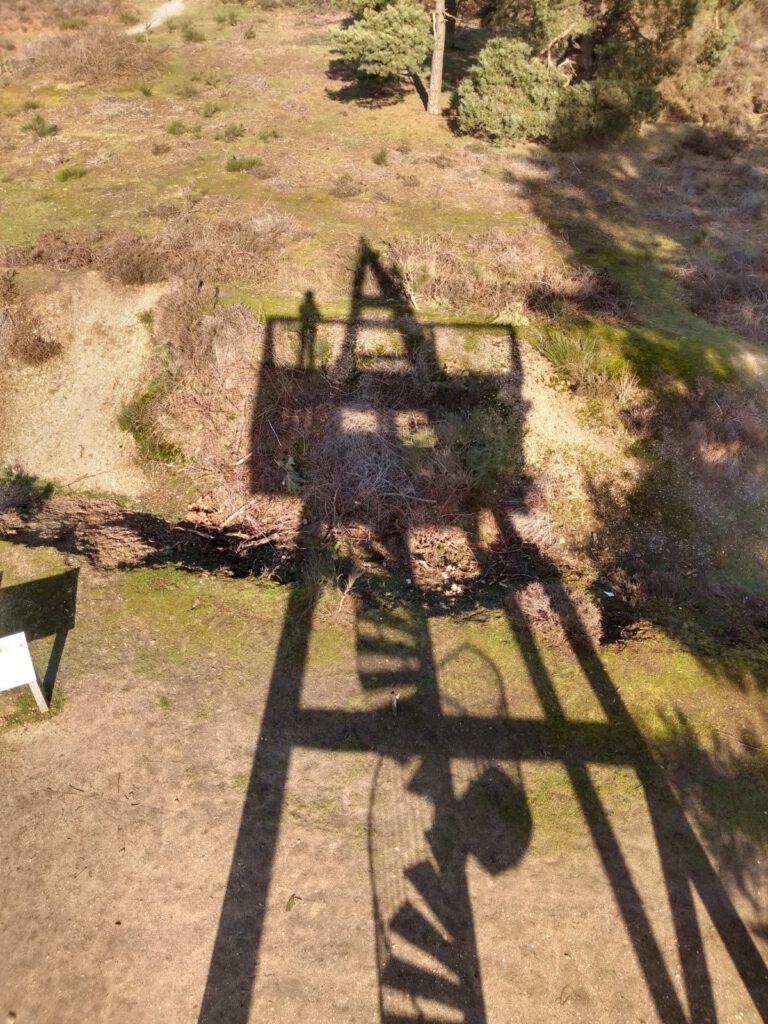
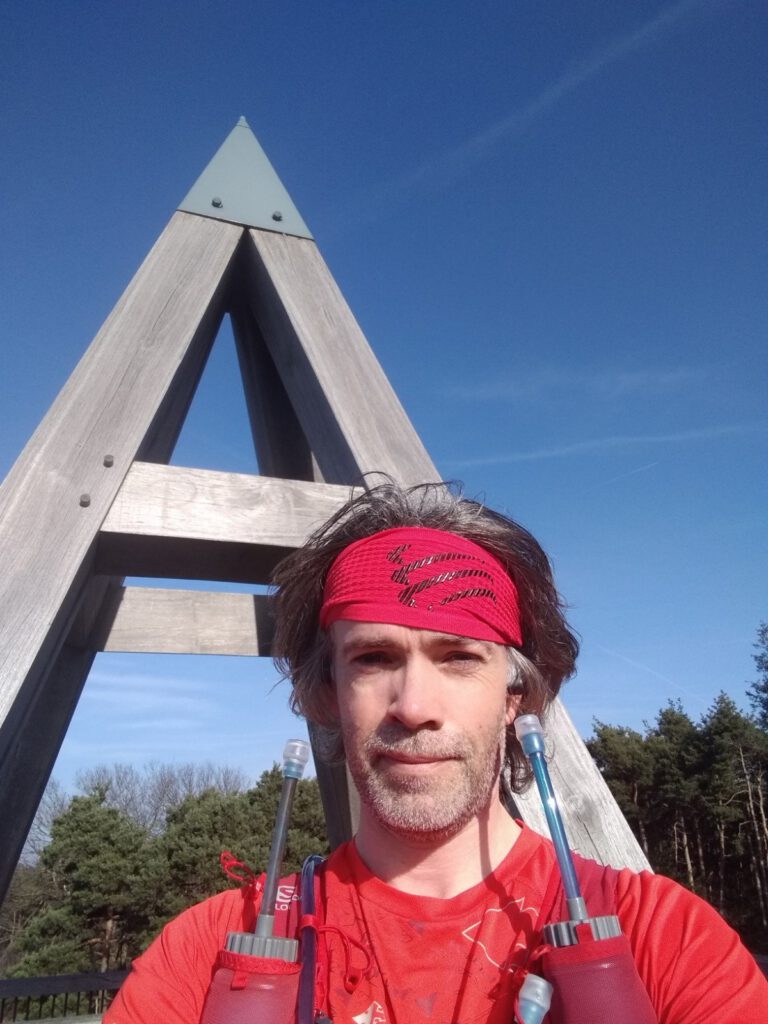
VW23 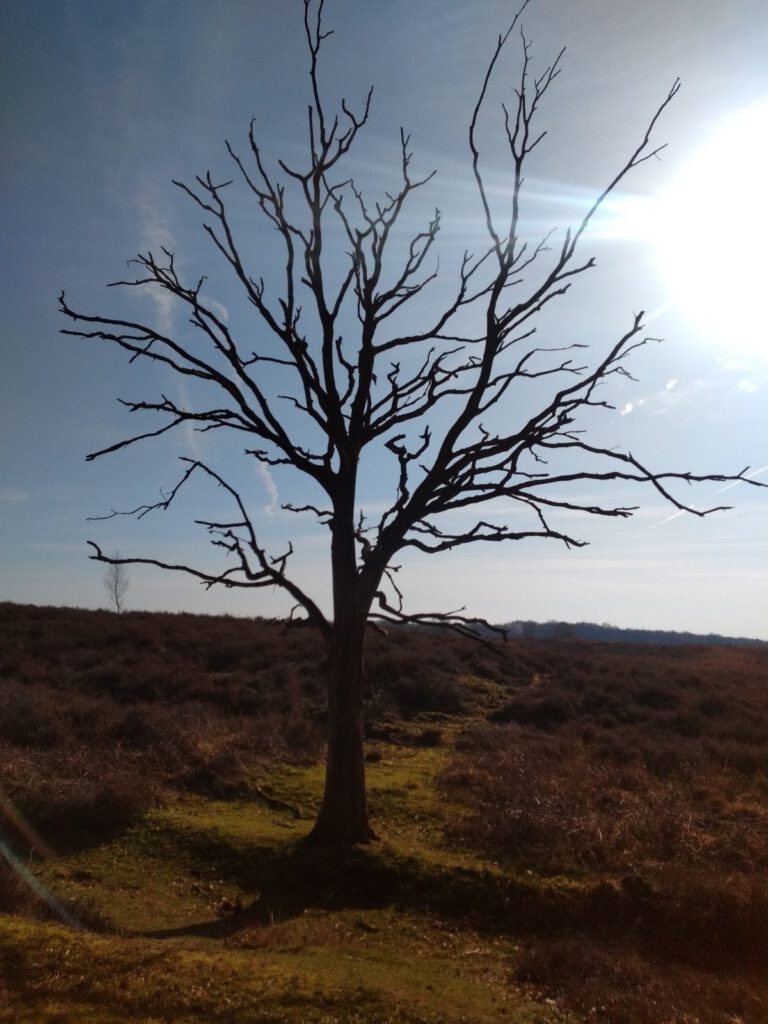
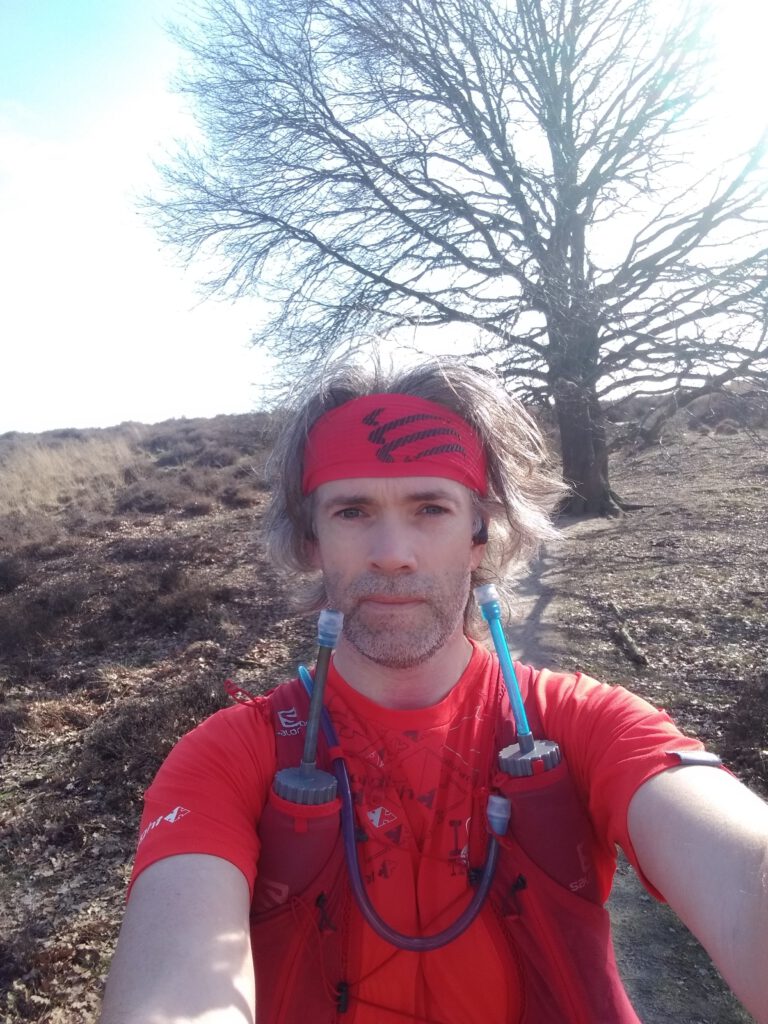
VW20 

I had hardly left the station of Molenhoek when I was allowed to climb the first hill: the Maasduinen. Although I had a fresh start, running was a disappointment. Temperature acclimatization is really a thing and so, not much later, I was standing on top of a dune, sweating and with a very high heart rate. The only time I have ever experienced such a rapid transition must have been during the Run Forest Run trail camp. That time I ran shirtless because I started to overheat at 15-16 C…
On top of the dune I ran through a number of strangely fenced off pieces of heathland. This used to be the Heumense Schans, a defensive structure in the shape of a five-pointed star. It's an ideal viewpoint.
Of course the dune itself was not high enough and a little later I could admire the view from one of the waypoints, a viewing tower. It begged to be climbed. This time I did not mind waiting for the previous climbers to leave the wobbly stairs at all. It was just a way to recover from the heat. I already regretted the choice of a long tight; at my departure from Zuid-Holland it looked rainy, but here the sun was shining brightly.
Snow and ice
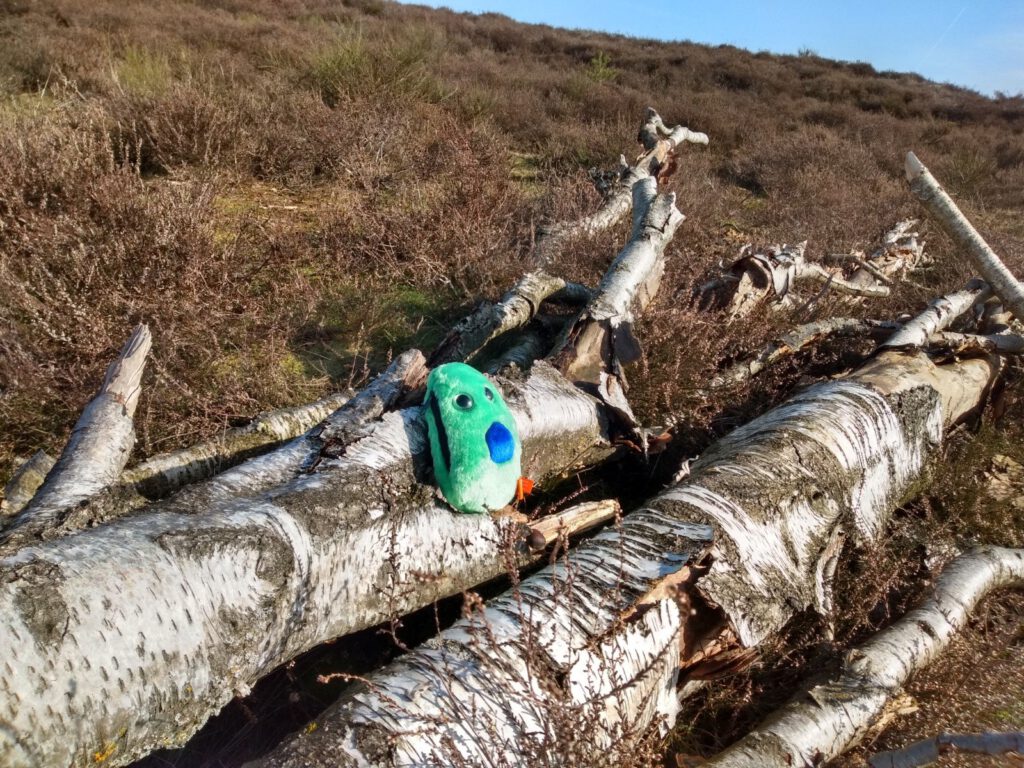
VW21 

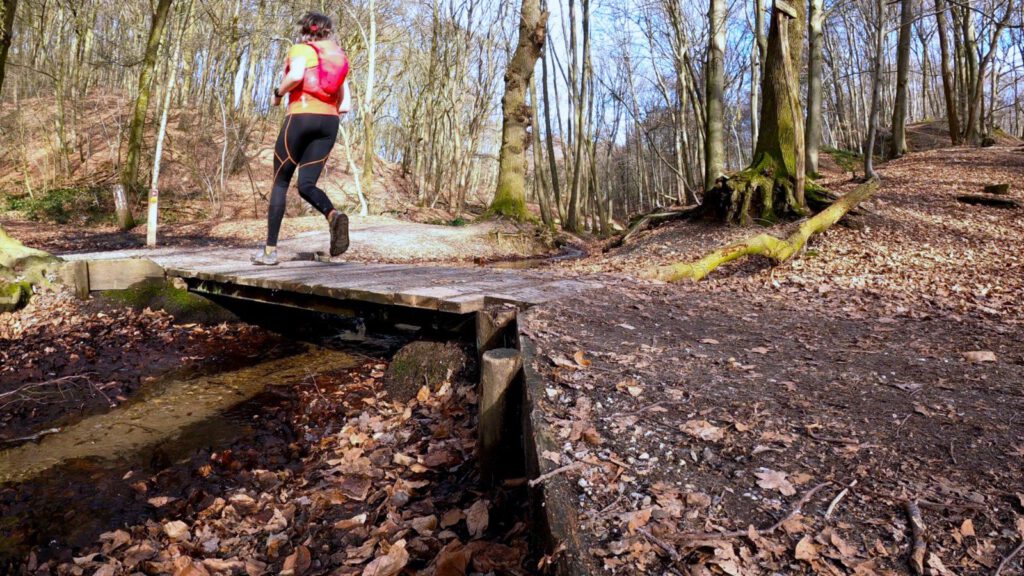
VW16 
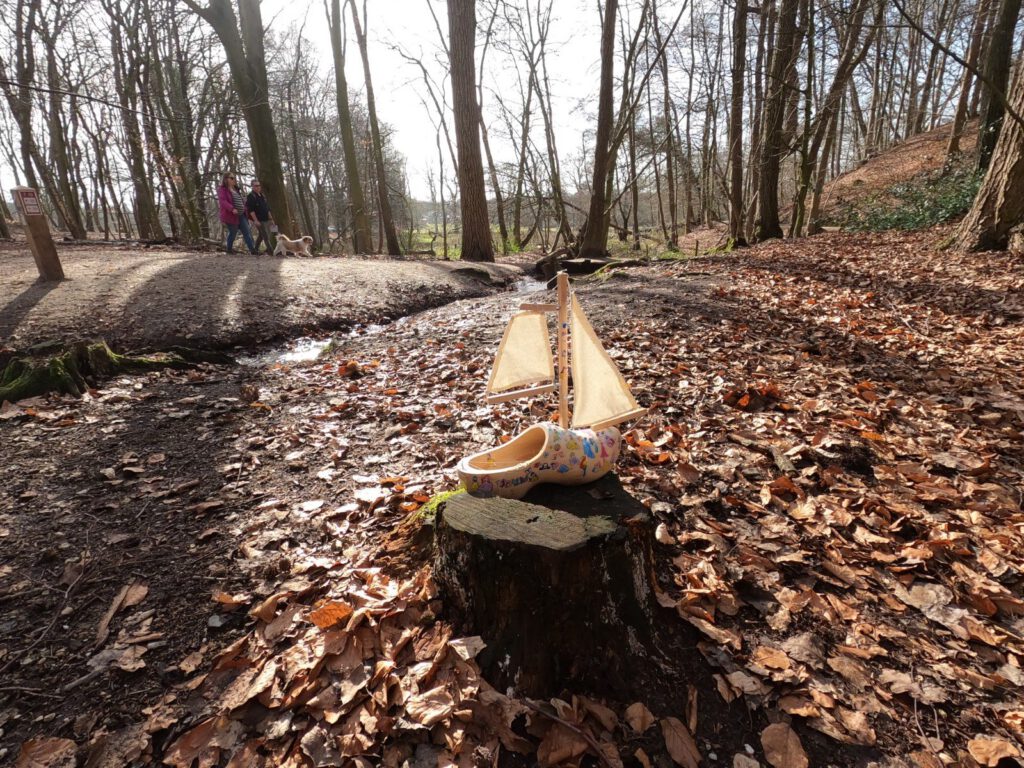

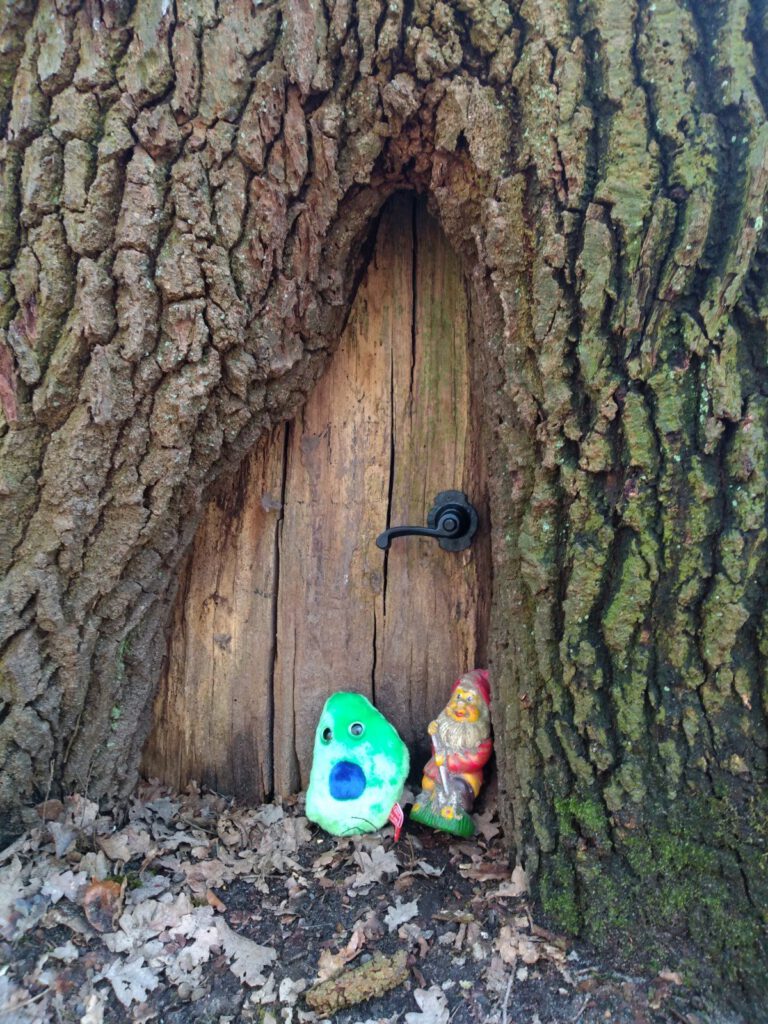
VW19
After a small piece of heathland, I entered a forest. Where on the heathland, despite the high temperature, still small pieces of snow remained,the forest even contained a pond with a thick layer of ice. To make things even more unrealistic, there is also a ‘fairy-tale tree’. An old oak with a small door for the gnomes. Of course, this is also a waypoint, so my beta cell was allowed to pose for the door.
A little while later I even lost my way for a moment. It turned out that my path was not much in use, because it was partly still covered in a thick layer of snow. So thick in fact, that you really sank into it. Fortunately, it soon led to a piece of forest with a meandering stream. The little bridge over the stream is one of the points. But after that I continued on my own path. Whether my route was truly unique: no idea, but every now and then I had the feeling I wasn't the only waypoint hunting trailrunner, because a few times someone showed up around the points.
Roman villas and airplanes
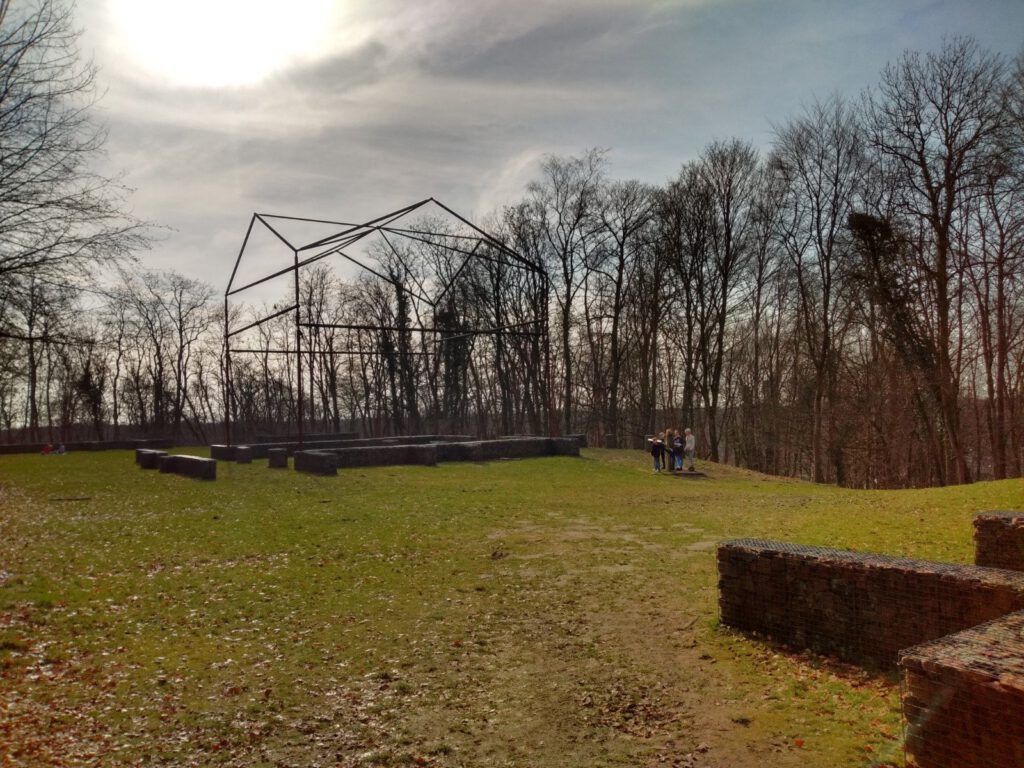
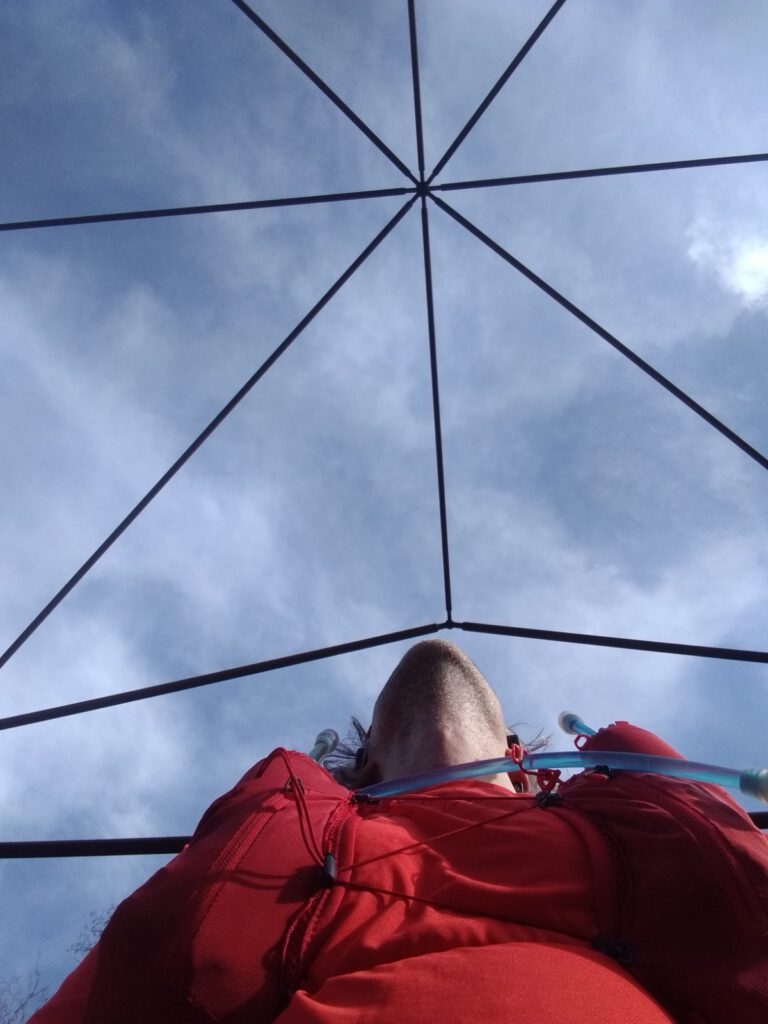
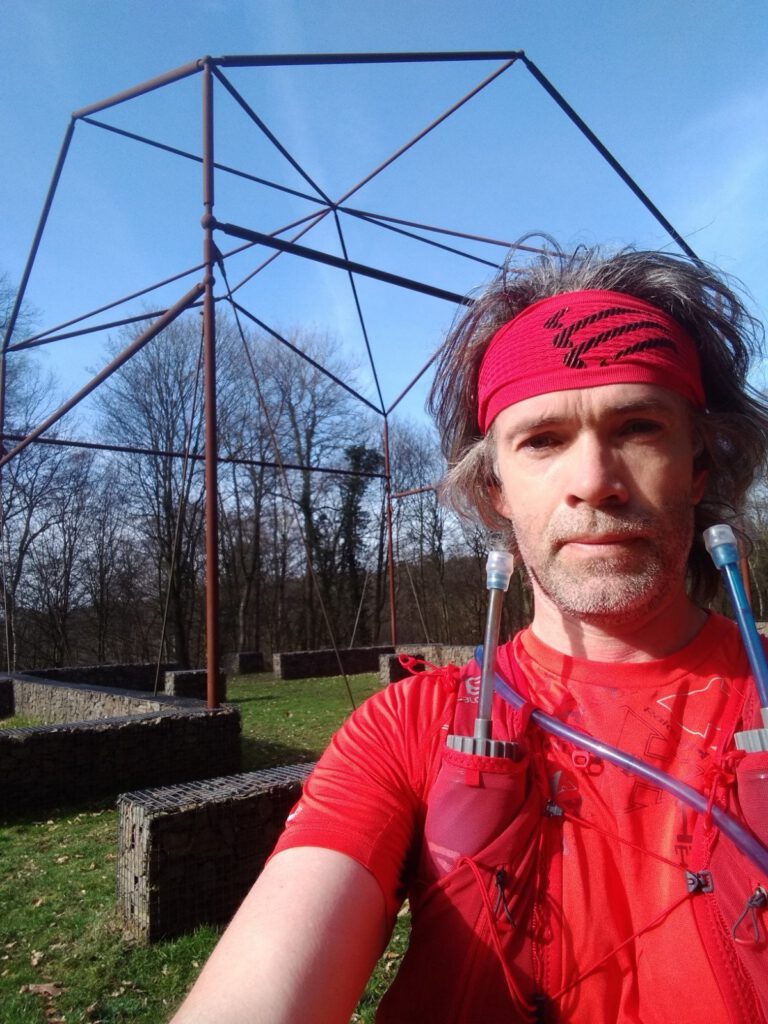
VW17 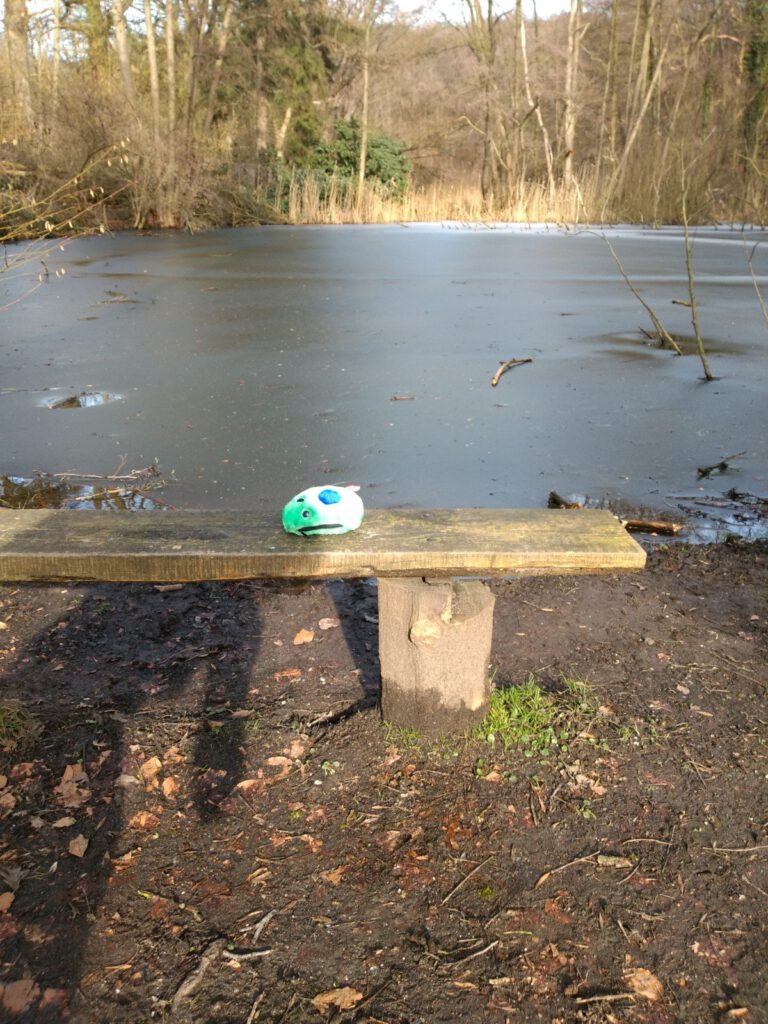
VW18 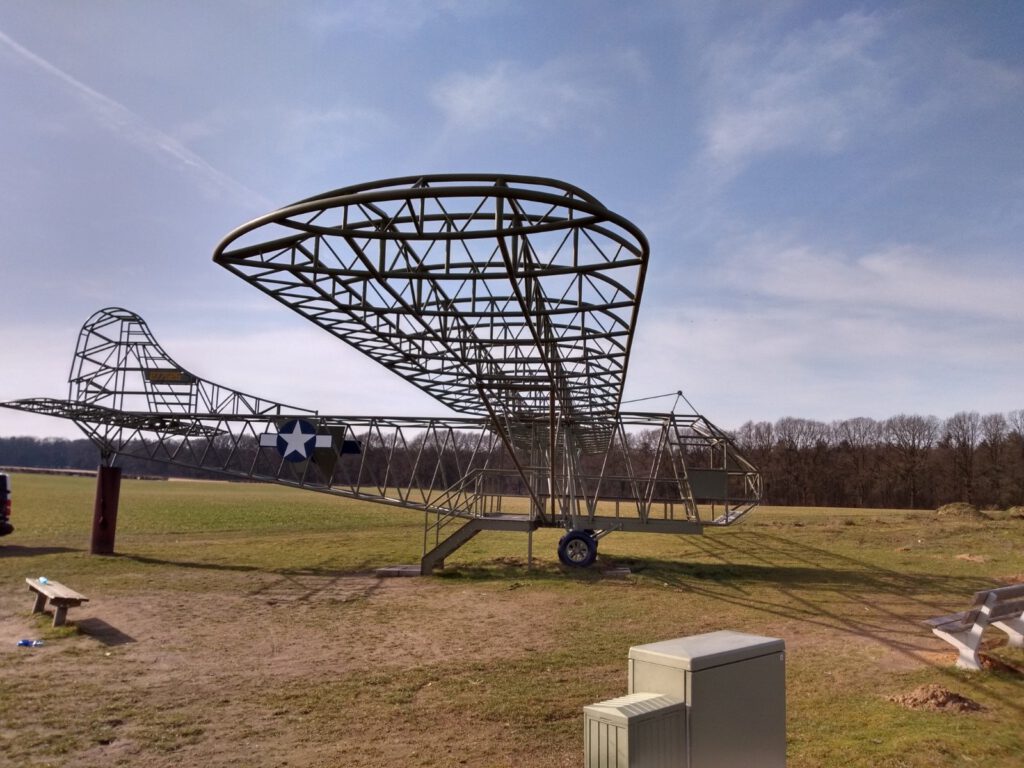
The area around Nijmegen is known for its Roman settlements. It is also here that the largest Roman city in the Netherlands was located. Archaeologists still find traces regularly, and of course the region likes to pride itself on this glorious past. Of course, that's why I was very curious about the Roman villa and other points found on Komoot. I know it's only a wire model, but it's always nice to dream about other times. Walking through the garden of the villa with a red broom on your 'Roman' helmet, how different it must have looked back then.
The water mill from a much later date is a lot less impressive. But this mill from 1725 is still used for grinding grain.
That functionality does not apply to a short excursion from the waypoints to an even more modern plane from the Second World War. Here too the plane is just a life-size tube frame of the Waco Glider, a glider that was frequently used during Operation Market Garden. Taking good pictures of the frame is not really possible: a trainer with a big bus yells at his student boot camper like a drill sergeant.
Takeaway
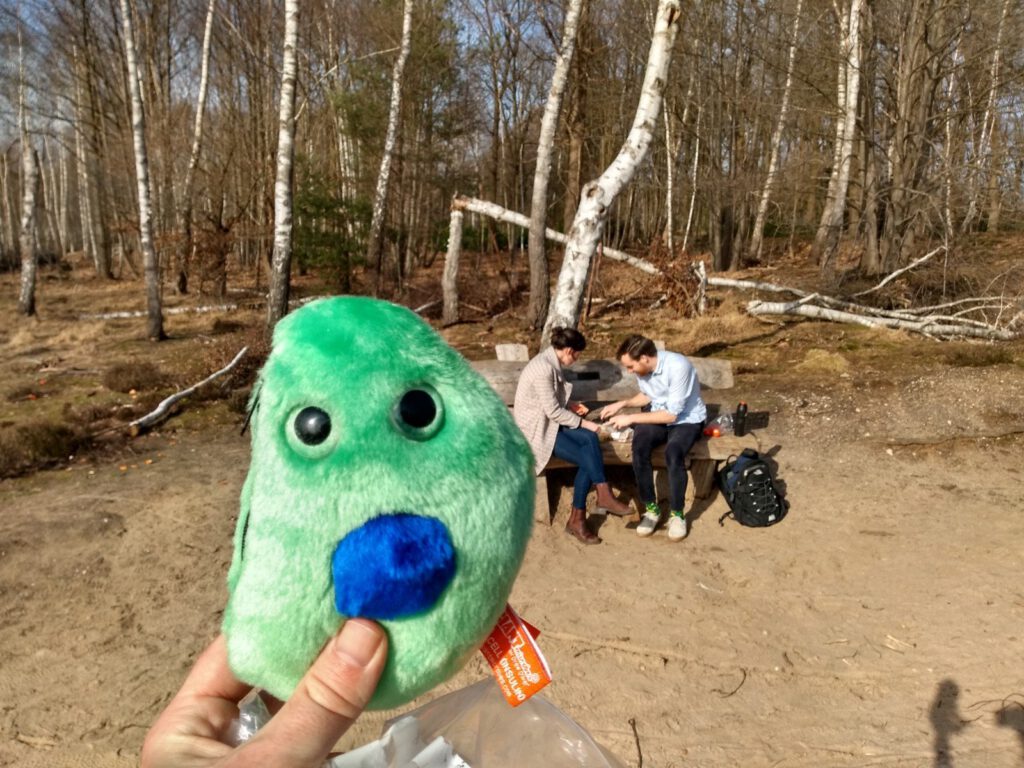
VW25 
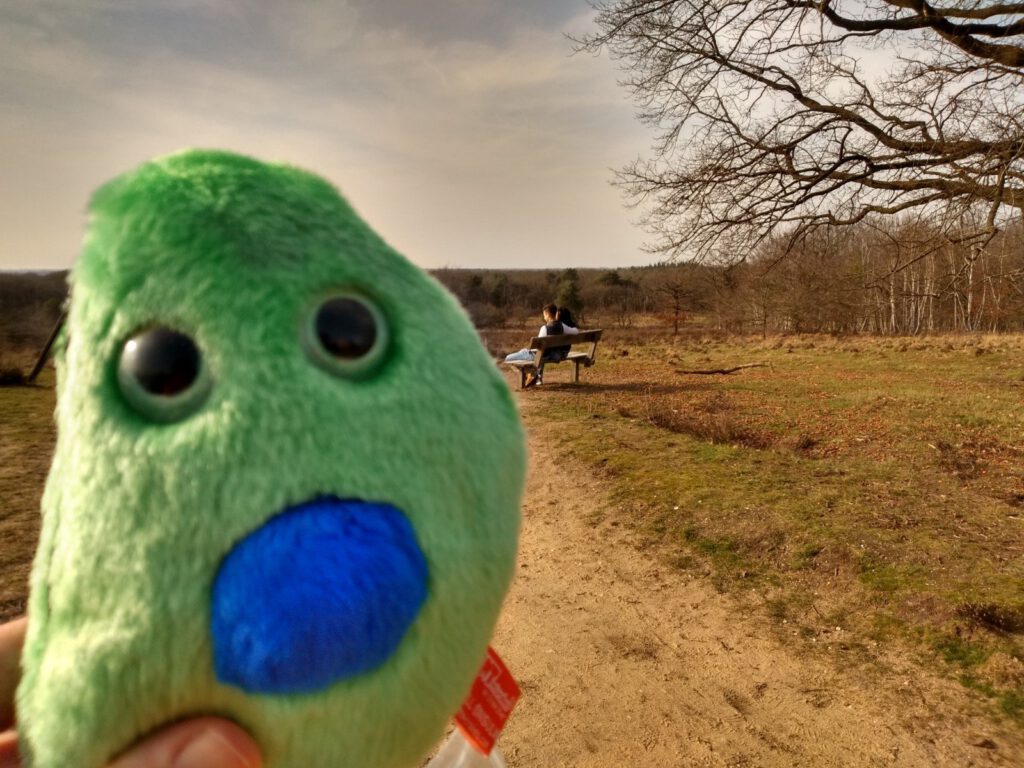
VW26 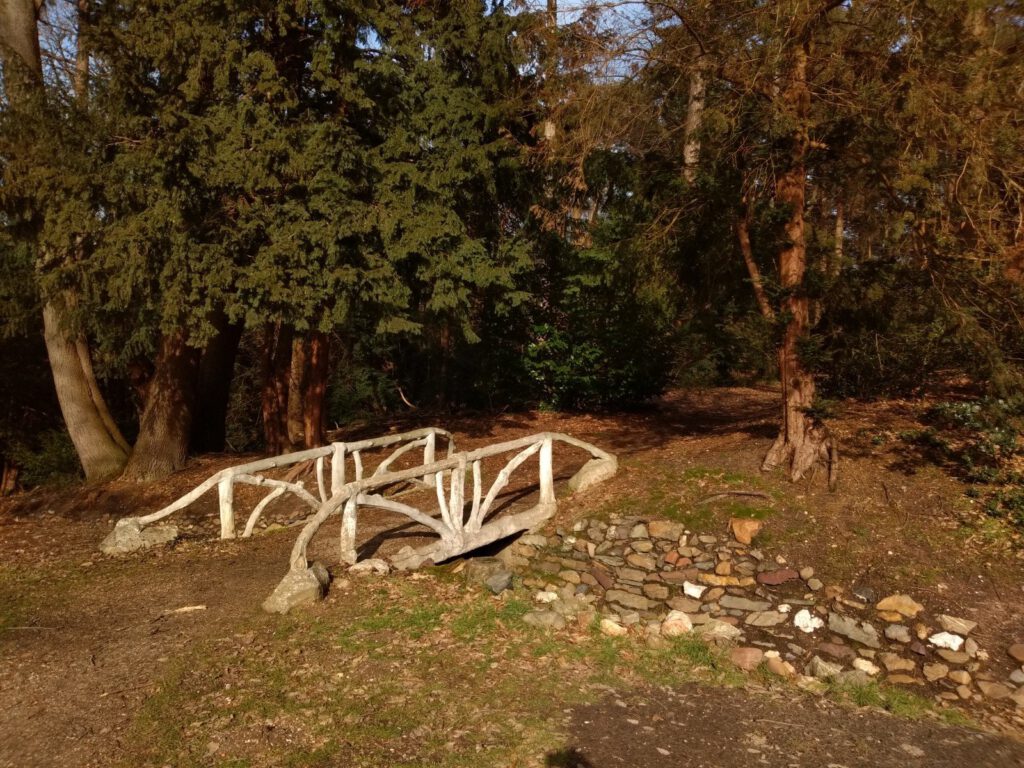
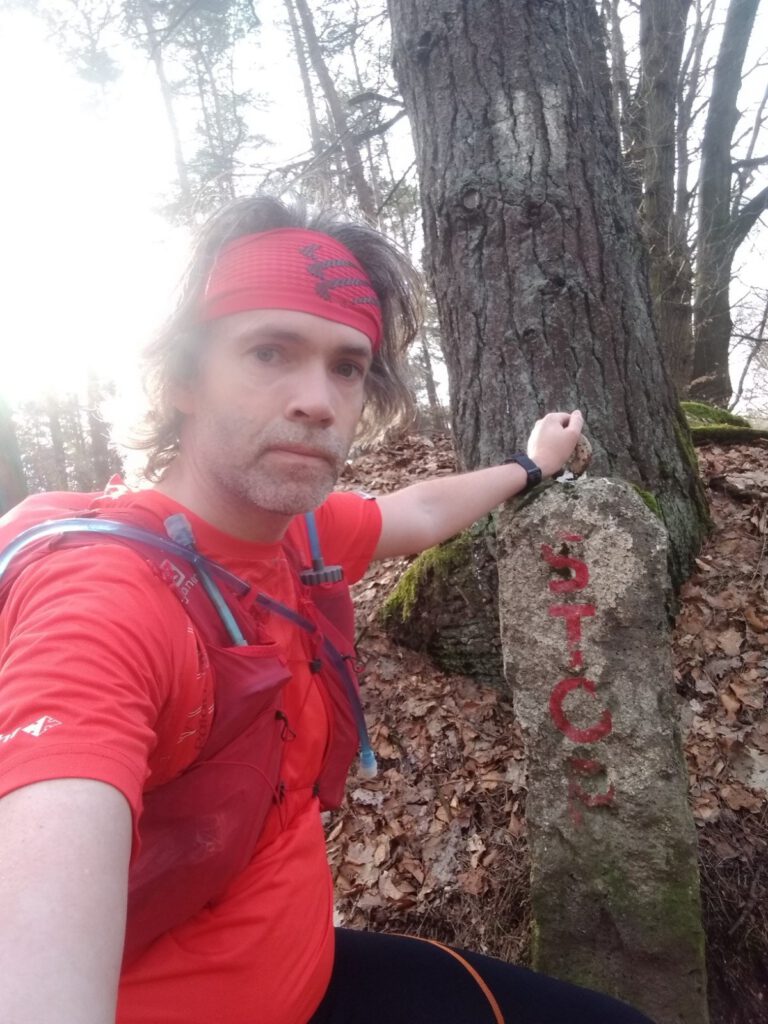
VW28 
VW30
Whereas around the airplane and the Roman villa there were already relatively many hikers, at a Groesbeek coffee-to-go it was crawling with cyclists and day-trippers. This immediately demonstrated the absurdity of the corona regulations. On the benches and walls around the café more people were present than would normally fit on the terrace. While at the tables on the terrace some 1.5 m distance can be maintained, on the walls where everyone was now sitting this was impossible. Strange times and it bodes well for when summer really starts...
The part north of Groesbeek was busier than the southern part of the trail, which I liked better because of the tree paths. There were quite a few hikers and it happened twice that my waypoint was taken. Fortunately, the people could laugh at me taking a picture from a distance, with my mascot in hand. To be sure, I also asked at one of the benches if I really had the right one. The watch did not show the full text, but on ‘Bank Lou’ there was actually a plaque in memory of one Louise.
Along the line
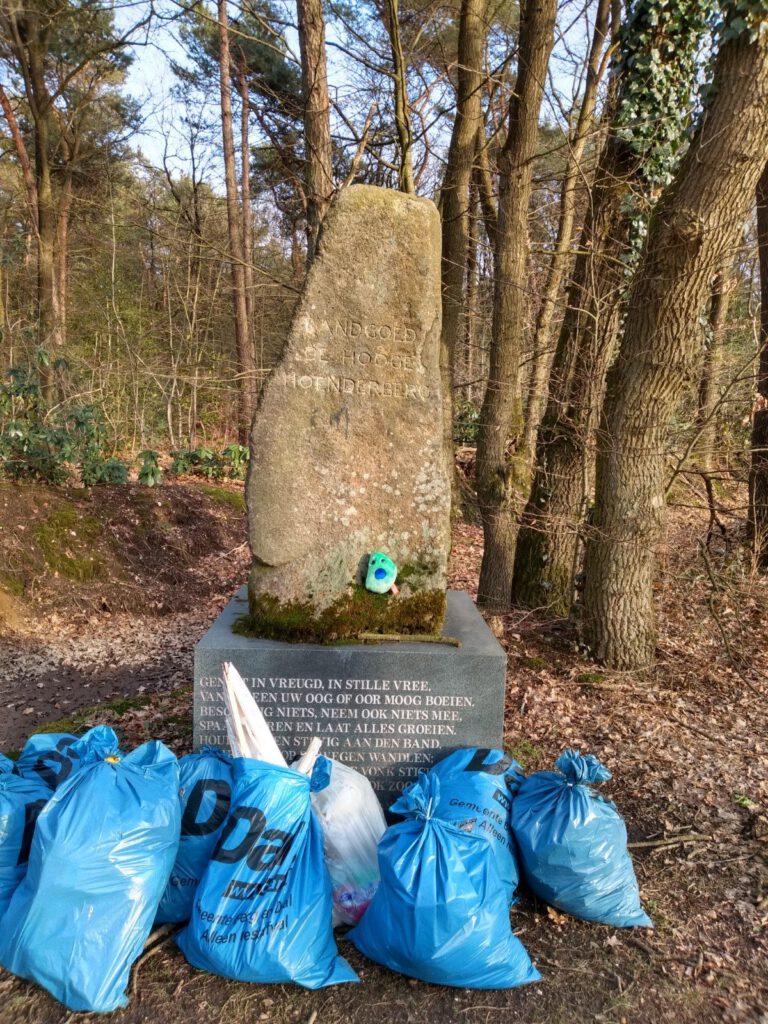
VW27 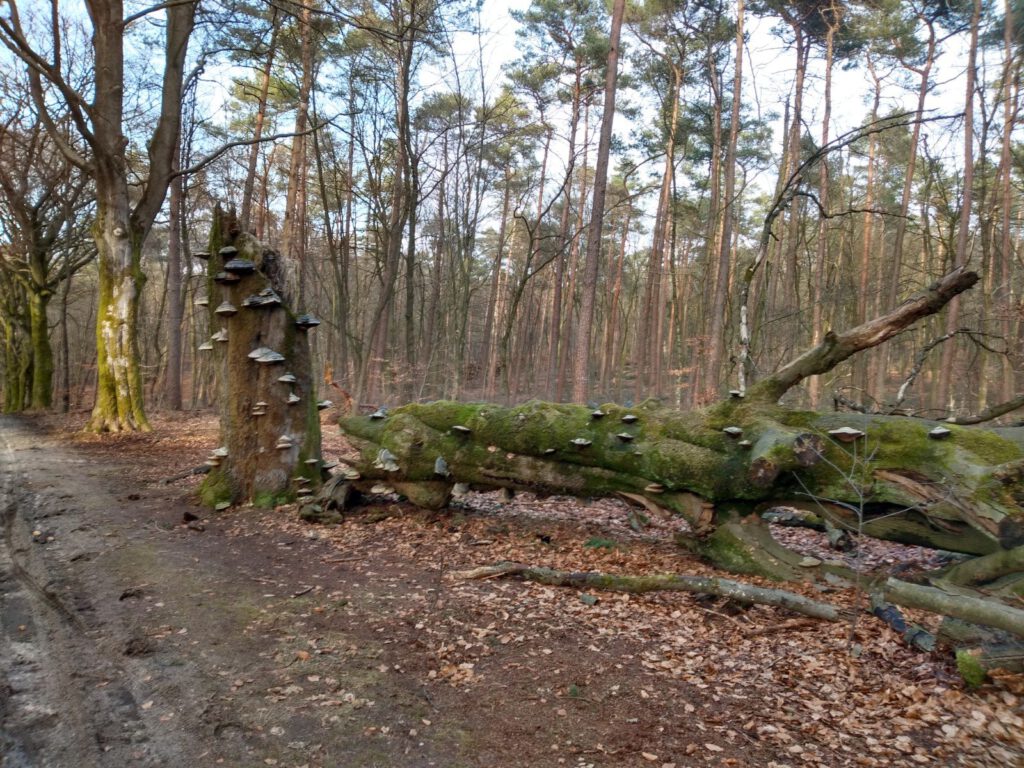
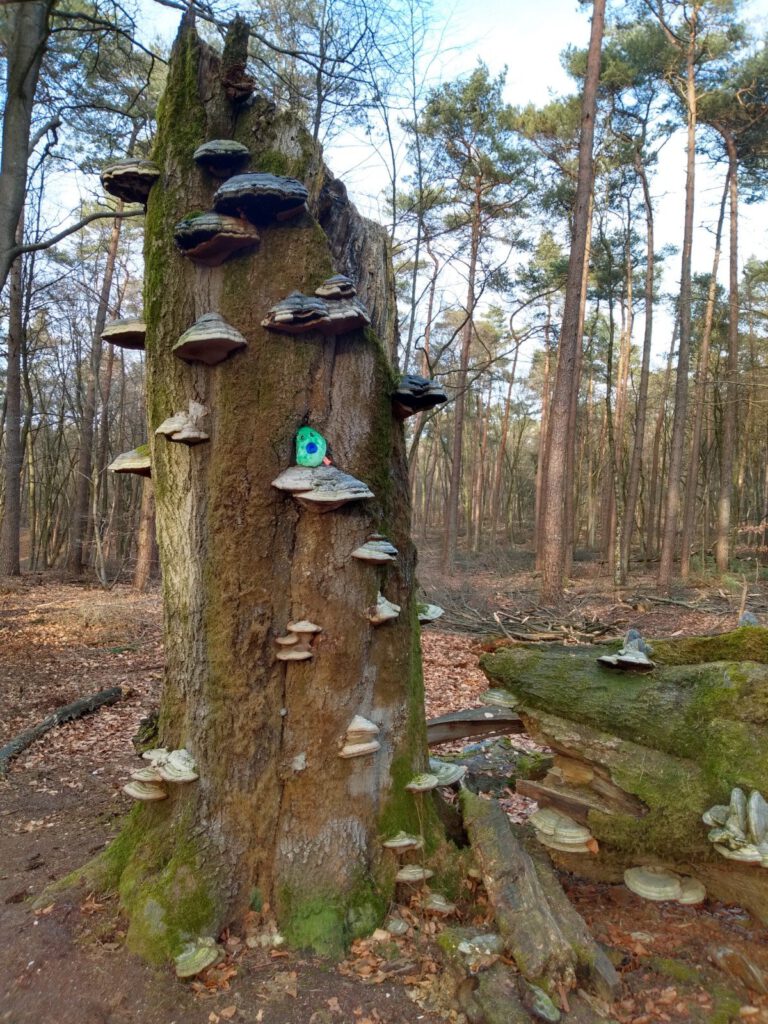
VW29 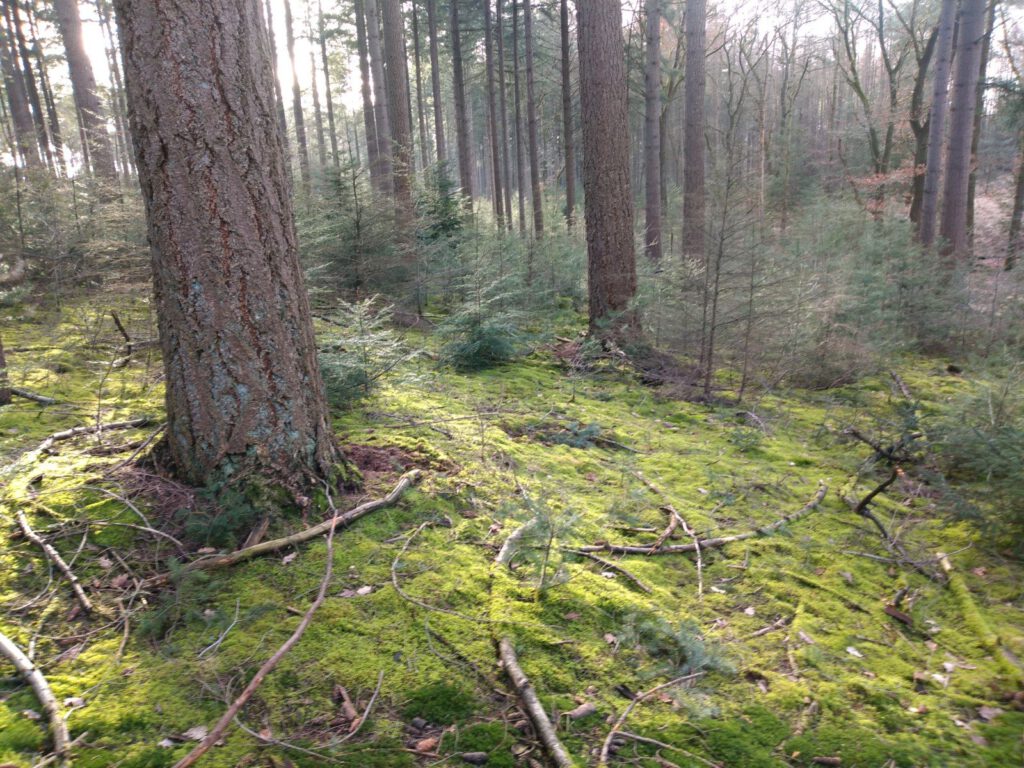
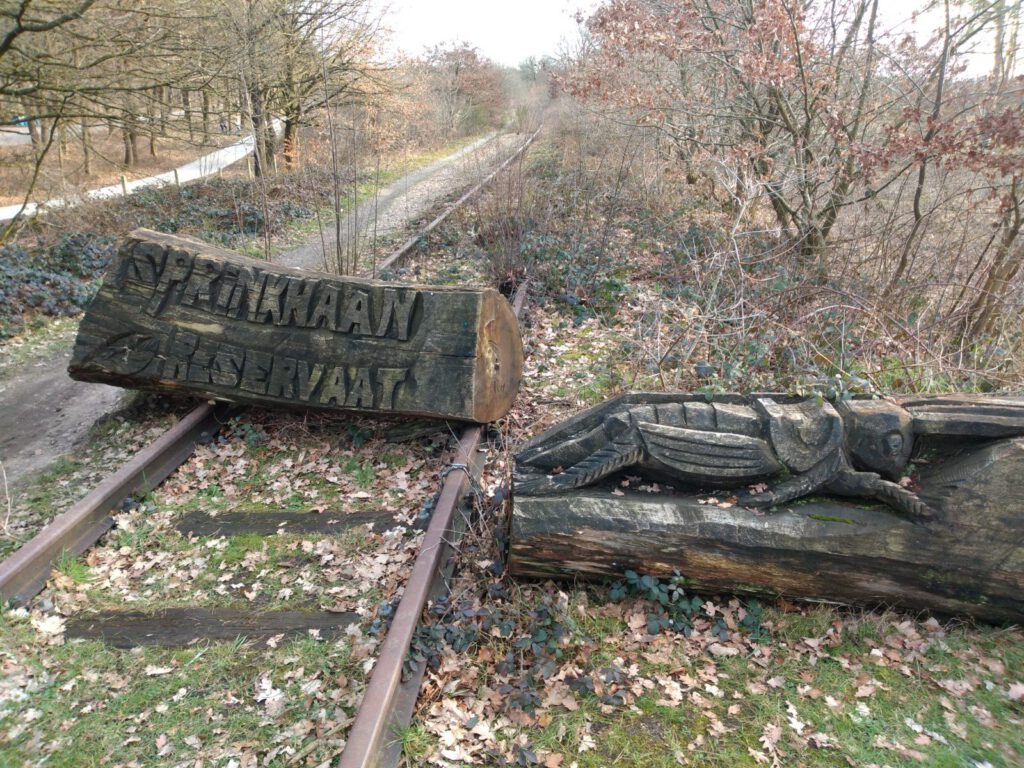
Not only humans were enjoying the sunshine this day. At a distance I saw two hikers standing still for a while at a certain point. Of course I became curious, so I had to have a look there too. It turned out the snow wasn't gone yet, but the first caterpillars were already crawling around. For most caterpillars the season only starts in April/May, I always thought. When I looked it up, it might be the common footman, a species that hibernates as a caterpillar between August and May and that sometimes can be found sunbathing.
Just a few more points and my trip is already over. Unfortunately, one of those last points turns out to be a bit of a shame. It is a memorial stone where, just this day, all the garbage had been put out in smelly, torn bags. With a pinched nose I put the beta cell on the monument. A quick picture and off we went.
As an extra insult: not even 100 m further on I found a much nicer point: a wooden grasshopper on the old railway line from Nijmegen to Malden. This line was quite close to the present-day railway that took me back home a bit later.
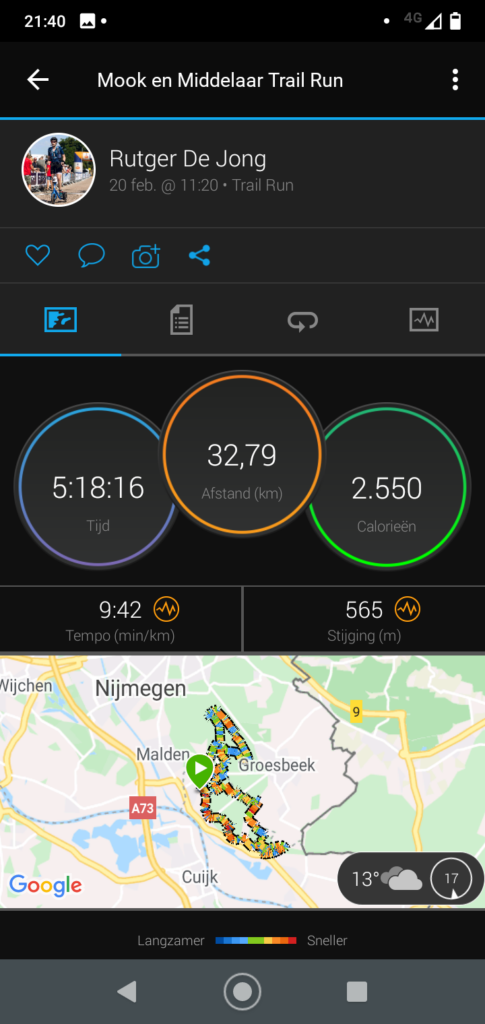
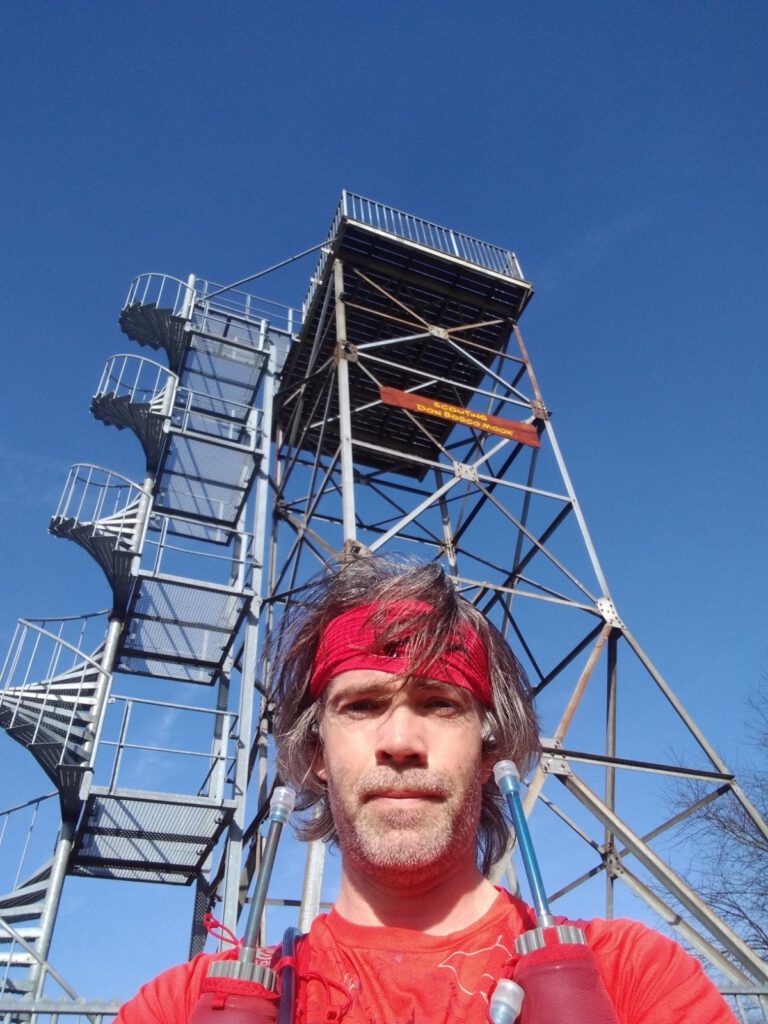
VW22 